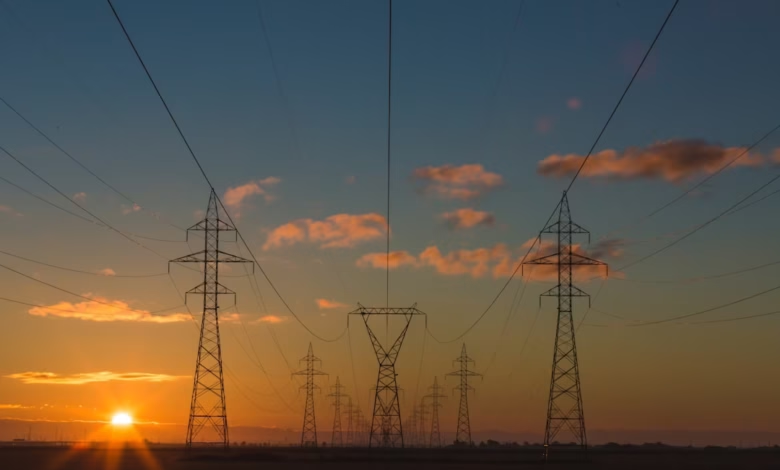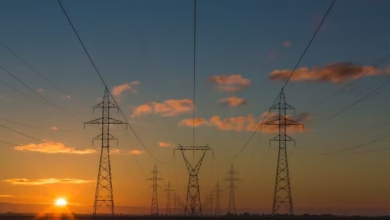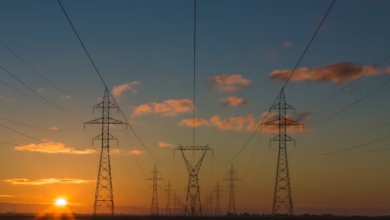Offshore Energy: Harnessing Wind Farms and Oil Rigs for a Sustainable Energy Future

As the world grapples with the pressing challenges of climate change and the need for sustainable energy solutions, offshore energy has emerged as a pivotal player in the quest for a greener future. From expansive wind farms harnessing the power of wind energy to the reliable operations of oil rigs, the sea is increasingly becoming a vital frontier for both renewable and traditional energy production. This article delves into the rise of offshore energy, examining its role in the global energy transition as we shift away from fossil fuels towards more sustainable options. Innovations in offshore renewable energy are not only reshaping energy markets but also driving advancements in energy efficiency, energy storage, and energy transportation. Additionally, as nations prioritize energy security and navigate complex energy policies, the future of offshore energy investments is more critical than ever. Join us as we explore key global energy trends, innovations in energy R&D, and the potential of offshore energy to revolutionize the way we think about energy economics in the face of climate change.
- 1. The Rise of Offshore Energy: Exploring Wind Farms, Oil Rigs, and Their Role in the Energy Transition
- 2. Innovations in Offshore Energy: How Renewable Energy Sources are Shaping Global Energy Markets
- 3. Energy Security and Investment: The Future of Offshore Energy in the Context of Climate Change and Energy Policy
1. The Rise of Offshore Energy: Exploring Wind Farms, Oil Rigs, and Their Role in the Energy Transition
The offshore energy sector has gained significant momentum in recent years, becoming a crucial component of the global energy landscape. As countries aim to transition from fossil fuels to renewable energy sources, offshore wind farms and oil rigs are at the forefront of this energy transition. The increasing focus on energy efficiency and energy security highlights the need for diverse energy solutions, including offshore energy production.
Wind energy has emerged as a leading player in the renewable energy market. Offshore wind farms utilize the abundant wind resources found at sea to generate electricity, significantly contributing to the reduction of greenhouse gas emissions. According to the International Energy Agency (IEA), offshore wind capacity is projected to grow substantially, driven by advancements in energy R&D and supportive energy policies (IEA, 2023). This growth not only supports climate change mitigation but also enhances energy security by diversifying the energy supply.
In addition to wind farms, oil rigs continue to play a significant role in the energy mix, particularly in regions where fossil fuels still dominate energy production. However, the industry is evolving, incorporating technologies such as carbon capture to minimize environmental impact. The integration of innovative solutions in offshore oil extraction processes aligns with global energy trends towards sustainability.
Moreover, offshore energy projects are increasingly intertwined with energy storage and smart grid technologies. These innovations enable better management of variable energy sources, ensuring a stable supply to energy markets. As the use of electric vehicles and hydrogen energy expands, the demand for reliable and efficient offshore energy solutions will only increase.
Investment in offshore energy is not only crucial for meeting immediate energy demands but also for fostering long-term energy economics and climate resilience. By investing in distributed energy systems and exploring synergies between offshore wind energy and other renewable resources, countries can enhance their energy exports while reducing energy imports.
The role of offshore energy in the energy transition is undeniable. As nations strive for a sustainable future, the collaboration between offshore wind farms, oil rigs, and emerging technologies will play an essential part in shaping a greener, more secure energy landscape.
References:
International Energy Agency. (2023). World Energy Outlook 2023. Retrieved from https://www.iea.org/reports/world-energy-outlook-2023
2. Innovations in Offshore Energy: How Renewable Energy Sources are Shaping Global Energy Markets
The offshore energy sector is undergoing a significant transformation, driven largely by innovations in renewable energy sources. As global energy markets shift towards more sustainable options, the emphasis on harnessing wind energy, solar power, and other forms of green energy has intensified. This transition is not only crucial in addressing climate change but also in enhancing energy security and diversifying energy portfolios.
Wind energy, in particular, has emerged as a leading player in offshore energy production. Advanced turbine technology and larger installations are making it possible to generate significant amounts of electricity from offshore wind farms. These innovations are contributing to increased energy efficiency while reducing reliance on fossil fuels. For example, floating wind farms are now being deployed, allowing for energy generation in deeper waters where traditional fixed-bottom turbines are not feasible. This development opens new opportunities for energy investment and enhances energy exports in regions with abundant wind resources.
Moreover, the integration of renewable energy sources with smart grids is reshaping energy transportation and distribution. Smart grids facilitate better management of energy flows and enhance the reliability of energy supply, while energy storage solutions, such as batteries and hydroelectric systems, are vital for balancing supply and demand. This combination of technologies supports the energy transition by allowing intermittent renewable energy sources to contribute more significantly to the energy mix, thus decreasing dependence on thermal energy and fossil fuels.
The push for carbon capture and hydrogen energy also plays a critical role in the offshore energy landscape. As countries implement stringent energy policies aimed at reducing emissions, innovative approaches are being explored to capture carbon from existing energy production methods, including offshore oil rigs. Furthermore, hydrogen energy, particularly green hydrogen produced using renewable sources, offers a promising avenue for decarbonizing various sectors, including transportation and industrial processes.
In summary, innovations in offshore energy are not merely enhancing energy production but are fundamentally reshaping global energy trends and economics. By fostering an environment conducive to energy R&D and supporting distributed energy models, nations can strategically position themselves in the evolving energy markets. As the world moves towards a more sustainable energy future, the integration of renewable energy sources into offshore energy production will be pivotal in achieving a low-carbon economy.
3. Energy Security and Investment: The Future of Offshore Energy in the Context of Climate Change and Energy Policy
As the world increasingly confronts the realities of climate change, energy security and investment in offshore energy are becoming pivotal in shaping future energy policies. Offshore energy sources, including wind farms and oil rigs, play a crucial role in the ongoing energy transition. This transition aims to reduce reliance on fossil fuels while promoting renewable energy technologies that enhance energy efficiency and sustainability.
Investments in offshore wind energy have surged in recent years, driven by global energy trends that favor green energy solutions. These investments not only bolster energy security by diversifying energy sources but also create jobs and stimulate economic growth. According to a report by the International Energy Agency (IEA), offshore wind capacity is expected to reach 235 gigawatts by 2030, signifying a substantial shift towards renewable energy generation (IEA, 2023).
Energy policy will be instrumental in facilitating this shift. Governments worldwide are beginning to implement strategies that prioritize energy investments in offshore projects. This includes the development of smart grids that can efficiently manage energy transportation from offshore facilities to consumers. Additionally, energy R&D is essential for advancing technologies such as carbon capture and hydrogen energy systems, which will further enhance the sustainability of offshore energy production.
The integration of distributed energy resources, such as wind energy and solar power, into the energy markets is also vital. By harnessing offshore energy alongside other renewable sources like hydropower and bioenergy, countries can enhance their energy exports and reduce energy imports. This not only improves energy security but also aligns with global efforts to combat climate change.
As electric vehicles gain popularity, the demand for energy storage solutions will continue to rise. Offshore energy can play a significant role in providing the necessary infrastructure to support these innovations. By investing in thermal energy systems and energy storage technologies, countries can ensure a reliable energy supply that meets the needs of a growing population while reducing their carbon footprint.
In conclusion, the future of offshore energy is intertwined with energy security and investment strategies that prioritize sustainability and innovation. As we navigate the complexities of climate change and energy policy, the transition to renewable energy sources, supported by robust investments in offshore projects, will be crucial for achieving a resilient and sustainable energy future.
References
International Energy Agency. (2023). Offshore Wind Outlook 2023. Retrieved from [IEA website](https://www.iea.org/reports/offshore-wind-outlook-2023)
In conclusion, the offshore energy sector stands at the forefront of the global energy transition, playing a pivotal role in reshaping energy markets and enhancing energy security. As we explore the rise of wind farms and oil rigs, it becomes clear that innovations in renewable energy are not just a response to climate change but a necessity for future energy efficiency and sustainability. The integration of diverse energy sources, including hydropower, bioenergy, and hydrogen energy, highlights a collective movement towards greener and more resilient energy systems.
Investments in offshore energy infrastructure are essential to navigate the complexities of energy policy and to ensure a stable supply amidst fluctuating energy imports and exports. With advancements in energy storage, smart grids, and carbon capture technologies, the potential for offshore energy to contribute significantly to our energy mix, alongside fossil fuels and nuclear energy, is immense. As we embrace these energy innovations, we pave the way for a more sustainable future that prioritizes not only economic growth but also a commitment to combating climate change.
Ultimately, offshore energy is not merely an alternative but a cornerstone of our evolving energy landscape. By fostering continued energy R&D and exploring distributed energy opportunities, we can ensure a transformative impact on global energy trends, making strides towards a cleaner, more efficient, and secure energy future.





